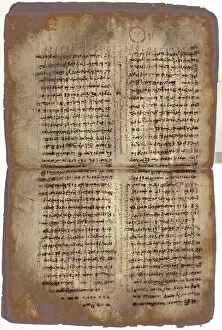Euchologion Collection
The Euchologion, also known as the Book of Needs, is a significant religious text that holds great historical and cultural value
All Professionally Made to Order for Quick Shipping
The Euchologion, also known as the Book of Needs, is a significant religious text that holds great historical and cultural value. One particular example of this sacred manuscript can be found in the Archimedes Palimpsest, a collection of pen and ink illustrations on vellum. Within the pages of this 15th-century Russian masterpiece lies a wealth of spiritual guidance and rituals. The Euchologion serves as a guidebook for various sacraments and ceremonies within the Eastern Orthodox Church. It contains prayers for baptisms, weddings, funerals, anointing of the sick, blessings for homes and objects, and many other important moments in one's spiritual journey. The intricate artwork adorning each page showcases the skillful craftsmanship of a Russian master artist. These delicate illustrations bring to life scenes from biblical stories or depict saints revered by believers. The attention to detail in every stroke reveals not only artistic talent but also reverence for faith. What makes this specific copy even more fascinating is its connection to the Archimedes Palimpsest. A palimpsest refers to a manuscript where original writings have been erased or scraped off so that new texts could be written over them. In this case, fragments from Archimedes' mathematical works were overwritten with Christian liturgical texts like those found in the Euchologion. This merging of scientific knowledge with religious devotion demonstrates how different disciplines coexisted during this period in history. It reflects both intellectual curiosity and deep spirituality within society at large. As we delve into these ancient pages preserved through time on vellum parchment, we are transported back centuries ago when faith was intertwined with artistry and scholarship. The Euchologion reminds us not only of our shared human heritage but also offers insight into how beliefs shaped cultures throughout history.





